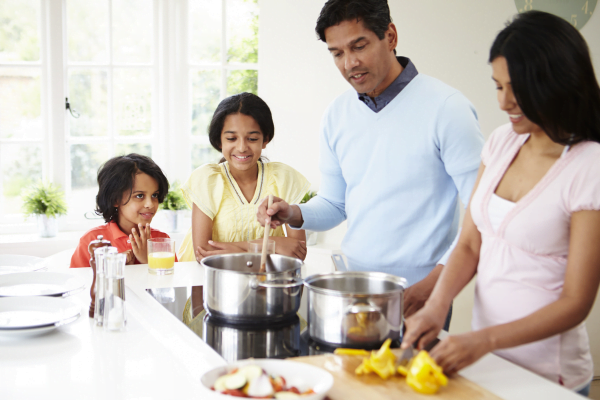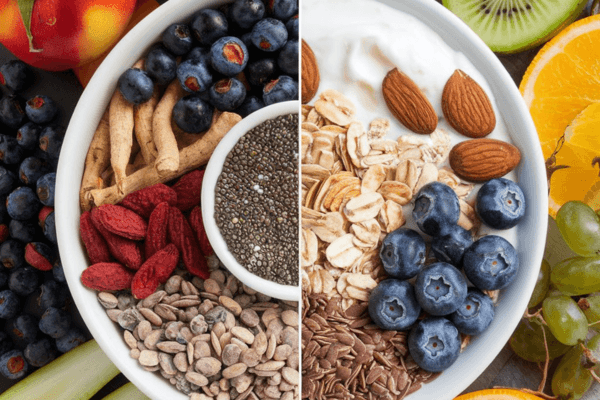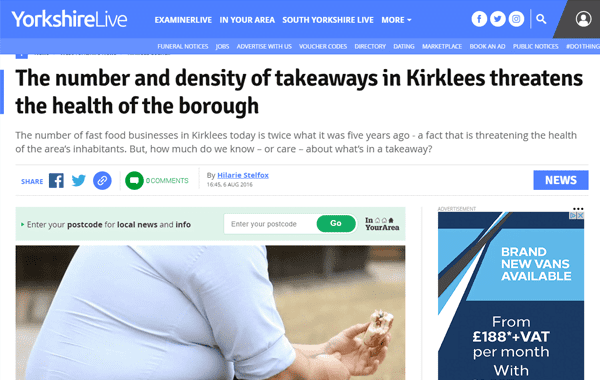Are you tracking calories as a part of your weight loss journey? If yes, do you measure your food in its raw raw or cooked form? Did you know that the caloric value of food changes with cooking?
So, why do some foods change calories when cooked? Read this blog to learn more.
What are calories?
Calories are a unit of energy. One calorie is the minimum amount of energy needed to raise one gram of water by one degree Celsius at one atmospheric pressure. Both cooked and uncooked food provide calories. Cooking can alter the nutritional and caloric value of foods. The caloric value of the cooked food can be influenced by the method of cooking you choose.
Why do we cook food?
Cooking food provides several advantages. They do not necessarily deplete food off its nutrients.
The benefits of cooking are:
- It enhances the flavour of food.
- It adds variety to the diet.
- Food becomes safer for consumption since microorganisms are destroyed.
- Harmful food toxins are broken down.
- Environmental pollutants present in the food are removed.
- Food is made tastier.
- Food is made more easily digestible. For example, Raw meat when cooked is easier to digest.
- Bioavailability of phytochemicals such as lycopene, beta carotene etc. increases with cooking.
Factors affecting calories of food
Volume of food
Cooking can significantly change the final volume or quantity of the food. Some foods may shrink while some may expand due to various factors such as:
a) Absorption of water – Cooking food like rice, pasta increases the weight of the food as water is absorbed.
b) Water loss – Some foods such as proteins like meat, eggs etc. change in texture during the cooking process. Eggs begin to coagulate when under a source of heat while the muscle fibres in meat and fish get denatured and may weigh lesser.
c) Added ingredients – Not all recipes use the pre-measured ingredient alone. In Indian cooking, onions, tomatoes, ginger-garlic paste etc. are a common base. This will contribute to the weight of the final dish. Or if leavening agents such as baking powder, yeast etc. are added, there is an increase in the carbon dioxide which is trapped within the product as the bread dough is proofed and baked.
d) Cooking time
Cooking time subjects the food to a heat for a longer period of time. This can reduce the moisture content of food.
Addition of cooking fat
Cooking food with fat will alter the caloric value of the food as it is an ingredient with high calories (1g of fat provides 9 kcal). Fat is easily absorbed by the food and it can greatly increase the weight of the food due to cooking.
Type of food cooked
The type of food cooked can influence the caloric value of food. This is because
a) Cereals and starchy food – They expand in size by absorbing water. For example, Cooking pasta more than doubles in size which naturally increases their caloric value.
b) Proteins – They may shrink in size as they are sensitive to heat and lose water weight. Their calorie content will depend on the type of cooking method used.
c) Vegetables and fruits – They predominantly lose the water weight and shrink and contribute to lower calories. For example, spinach.
d) Legumes, lentils and beans – Legumes absorb water and expand in size contributing to higher calories of food.
e) Dairy and dairy products – Milk and curd do not usually change in quantity when subjected to heat however, milk products like paneer, cheese etc. may be higher in calories depending on the fat content and quantity of milk used.
Phase change of food
a) Density of food – Food which is denser will have higher calories. For example, Frozen yoghurt is higher in calories than chilled yoghurt.
b) Change in volume – As the phase of food changes from solid to liquid or liquid to solid state, the caloric value of the food changes. For example, frozen ice cream will have fewer calories than melted ice cream as the quantity increases.
Method of cooking
The major deciding factor of the caloric value of food is the cooking method.
a) Frying – Oil absorption is high contributing to high caloric value of food.
b) Boiling, pressure cooking and steaming – Quantity of food changes as food may expand. However, it does not contribute to caloric changes of food. It is a healthy cooking method.
c) Grilling and broiling – It is a healthy method of preparing meat as the fat from the meat drips away.
d) Baking – The caloric value of the food baked will depend on the recipe chosen. Example baked meat will be lower in calories while baking a cake will contribute to higher calories.
e) Sauteing – This method of cooking involves oil or butter etc. which can contribute to the caloric value of food. The quantity of oil or butter used may also decide the caloric value.
Here is an example of how cooking methods can influence the caloric value of food:
100g of raw potato gives ~58 Kcal
| Deep frying potatoes | Pan frying potatoes | Roasting potatoes | Boiling potatoes | Baking potatoes | Steaming potatoes |
| ~150-180Kcal | ~130-150 Kcal | ~120-140 Kcal | ~100-120 Kcal | ~110-130 Kcal | ~90-100 Kcal |
Raw food vs cooked food comparison
| Food item | Nutrients | Raw (100g) | Cooked (100g) |
| Chicken breast | Energy | 124 Kcal | 165 Kcal |
| Protein | 23.2g | 31g | |
| Fat | 2.7g | 3.6g | |
| Lean steak mince | Energy | 121 Kcal | 161 Kcal |
| Protein | 20.4g | 27.2g | |
| Fat | 4.3g | 5.7g | |
| White pasta | Energy | 355 Kcal | 158 Kcal |
| Carbohydrates | 69.4g | 30.9g | |
| Protein | 13.1g | 5.8g | |
| Fat | 2.1g | 1.8g | |
| White potato | Energy | 77 Kcal | 103 Kcal |
| Carbohydrates | 17.5g | 23.3g | |
| Protein | 2g | 2.8g | |
| Fat | 0.1g | 0.1g | |
| White rice | Energy | 365 Kcal | 130 Kcal |
| Carbohydrates | 79.3g | 26.4 g | |
| Protein | 6.6g | 2.2g | |
| Fat | 0.6g | 0.2g |
*This is only an approximate of the nutritive value of food
Nutritive value of food after cooking
1. Meat and poultry
- Though the human species can digest raw meat and poultry, it is not palatable.
- Meat is also an important source of thiamine in the diet.
- Cooking meat makes the process of digestion easier as the digestive enzymes have a quicker access to protein.
- Subjecting meat to heat will coagulate and denature the protein present.
- Adding carbohydrates to the process of cooking meat can further deplete nutrients present in the meat due to the maillard reaction.
- Collagen which is a protein present in the connective tissue is not denatured when subjected to heat but becomes gelatine.
- In dry heat cooking methods, as the meat juices drip during roasting, it is commonly used to make gravy and is rich in nutrients such as iron and thiamine. But they do add calories to the food.
- In moist heat cooking methods, the nutrients are intact as the fat which melts is eaten along with the meat (liquid stew or casseroles etc.)
- Fat trims of meat are rich in vitamin D, but since these are removed during pre-preparation it is suggested to not to overdo the trimming.
2. Fish
- Just like meat, fish goes through the same process of protein denaturation during cooking.
- Vitamin A, D, omega 3 and iodine are important nutrients present in fish which may be lost during the cooking process if any fat is removed.
- Pollutants are commonly found in fish. Older, larger and faster swimming fish have higher mercury content. Cooking does help get rid of any excess pollutants but not the mercury content of fish. Frying is commonly used to cook fish but it quickly traps the pollutants already present in the fish.
3. Plant food
- Though vegetables and fruits can be consumed in raw form, other plant foods such as cereals, pulses, roots, legumes etc. must not be consumed in raw form as it is not digestible.
- Plant foods contain cellulose which is difficult to digest. Moist heat cooking methods such as – Steaming, boiling, broiling, stewing can help make plant food more digestible.
- Food such as rice, pasta, millets, barley etc. absorb water during cooking and the starchy water is discarded. This can lower calories as the starch is drained out.
- However, to retain nutrients it is suggested to use an absorption cooking method where water is constantly added and absorbed by the grains during cooking. Ex. making risotto.
When using a measuring scale to measure food should you measure raw or cooked form?
- Measuring food especially when you are on a body transformation journey is important to track your calories. Though it is best to measure food raw.
- Be consistent in measuring your food. Whether you are used to measuring food raw or cooked, always practise the same method.
- Most nutritional data available is based on the raw form of food and is comparatively accurate. While the method of preparation varies, the calories the food contains will vary too.
- The raw measure of food is precise and is not subjected to change due to various factors involved in cooking.
Mayuri,
Dietetic Researcher, Simplyweight













